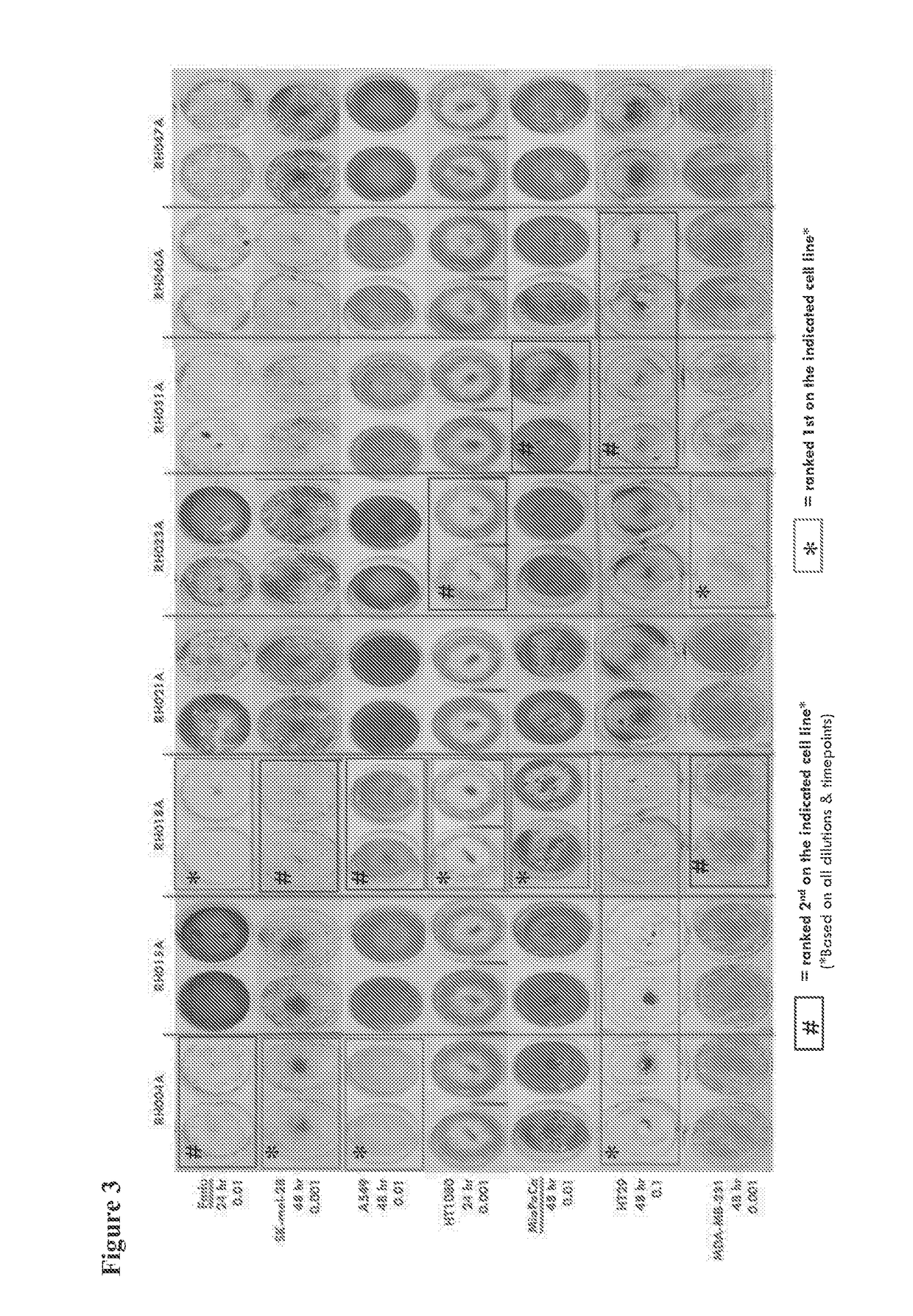Modified Oncolytic Virus
a technology of oncolytic virus and modified oncolytic, which is applied in the field of immunotherapy agents for oncolytic diseases, can solve the problems of not all tumors respond to treatment, not all patients achieve a survival advantage, and the tumors are released, so as to improve the direct oncolytic effect, improve the treatment effect, and increase the amount of tumor antigens
- Summary
- Abstract
- Description
- Claims
- Application Information
AI Technical Summary
Benefits of technology
Problems solved by technology
Method used
Image
Examples
example 1
ion of a Virus of the Invention
[0169]The virus species used to exemplify the invention is HSV, specifically HSV1. The strain of HSV1 used for exemplification is identified through the comparison of more than 20 primary clinical isolates of HSV1 for their ability to kill a panel of human tumor-derived cell lines and choosing the virus strain with the greatest ability to kill a broad range of these rapidly, and at low dose. Tumor cell lines used for this comparison include U87MG (glioma), HT29 (colorectal), LNCaP (prostate), MDA-MB-231 (breast), SK-MEL-28 (melanoma), Fadu (squamous cell carcinoma), MCF7 (breast), A549 (lung), MIAPACA-2 (pancreas), CAPAN-1 (pancreas), HT1080 (fibrosarcoma). Specifically, each primary clinical isolate of HSV is titrated onto each of the cell lines used for screening at MOIs such as 1, 0.1, 0.01 and 0.001 and assessed for the extent of cell death at time points such as 24 and 48 hrs at each dose. The extent of cell killing may be assessed by e.g. microsc...
example 2
n of Two Immune Stimulatory Molecule from a Virus Expressing a Fusogenic Protein
[0174]A virus similar to the GALV-R− and mGM-CSF expressing virus described above is constructed, but additionally expressing versions of CD40L. Here, instead of using a plasmid containing ICP34.5 flanking regions and an expression cassette comprising GM-CSF and GALV-R− driven by a CMV and an RSV promoter, a plasmid containing ICP34.5 flanking regions and an expression cassette comprising GM-CSF, GALV and CD40L driven by a CMV, an RSV and an SV40 promoter is used for recombination with the virus containing GFP inserted into ICP34.5 and non-GFP expressing plaques again selected.
example 3
t of the Combined Expression of a Fusogenic Protein and an Immune Stimulatory Molecule from an Oncolytic Virus in Mouse Tumor Models
[0175]The GALV R− protein causes cell to cell fusion in human cells but not in mouse cells because the PiT-1 receptor required for cell fusion to occur has a sequence in mice which does not allow cell fusion to occur. As a result mouse tumor cells expressing human PiT-1 are first prepared using methods standard in the art. Human PiT-1 is cloned into a lentiviral vector also comprising a selectable marker gene. The vector is transfected into target CT26 mouse colorectal cancer tumor cells and clones resistant to the selectable marker are selected to generate CT26 / PiT-1 cells. PiT-1 expression is confirmed by western blotting in untransfected cells and in cells transfected with the PiT-1 expressing lentivirus and by transfection of a plasmid expressing GALV-R− and confirmation that cell fusion occurs.
[0176]The utility of the invention is demonstrated by a...
PUM
| Property | Measurement | Unit |
|---|---|---|
| time | aaaaa | aaaaa |
| time | aaaaa | aaaaa |
| time | aaaaa | aaaaa |
Abstract
Description
Claims
Application Information
 Login to View More
Login to View More - R&D
- Intellectual Property
- Life Sciences
- Materials
- Tech Scout
- Unparalleled Data Quality
- Higher Quality Content
- 60% Fewer Hallucinations
Browse by: Latest US Patents, China's latest patents, Technical Efficacy Thesaurus, Application Domain, Technology Topic, Popular Technical Reports.
© 2025 PatSnap. All rights reserved.Legal|Privacy policy|Modern Slavery Act Transparency Statement|Sitemap|About US| Contact US: help@patsnap.com



